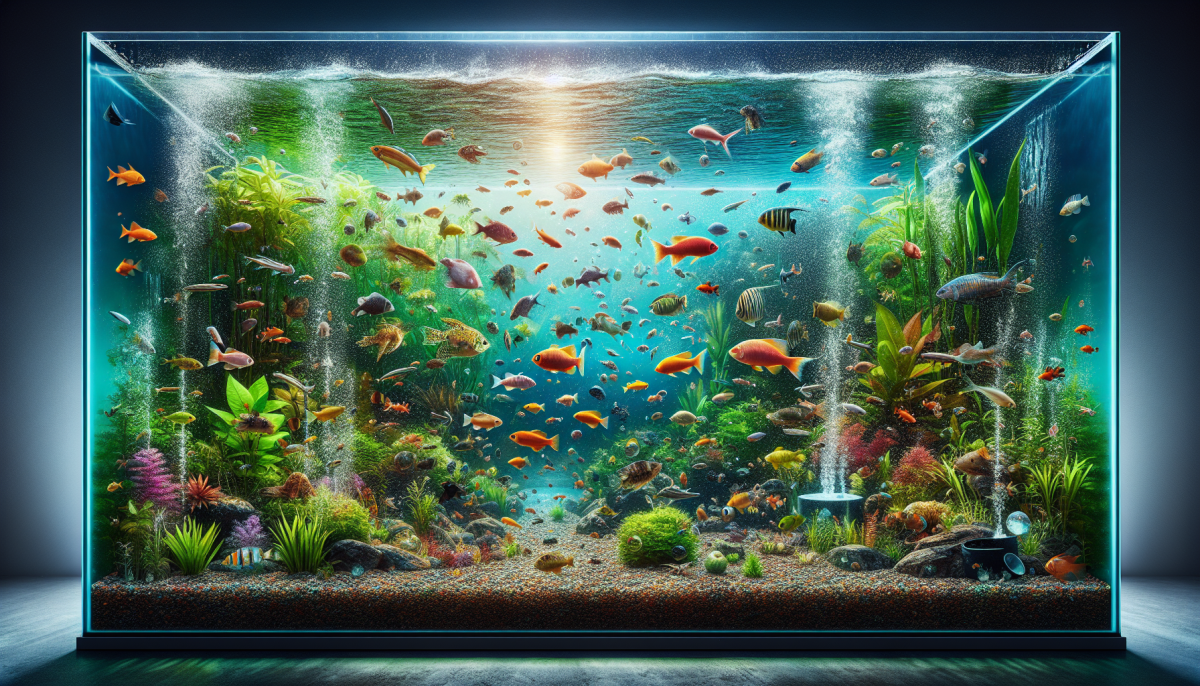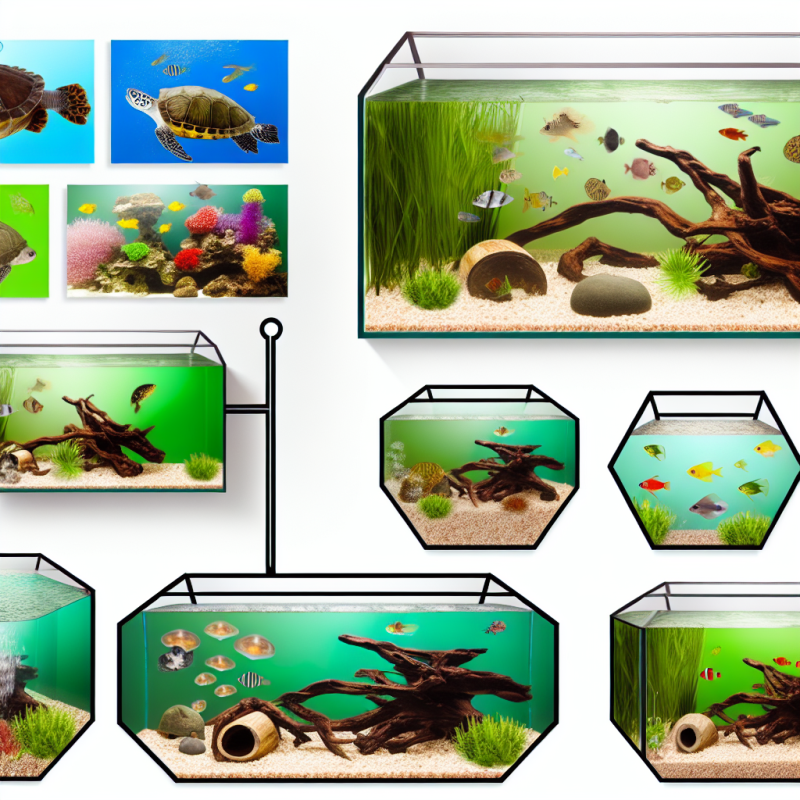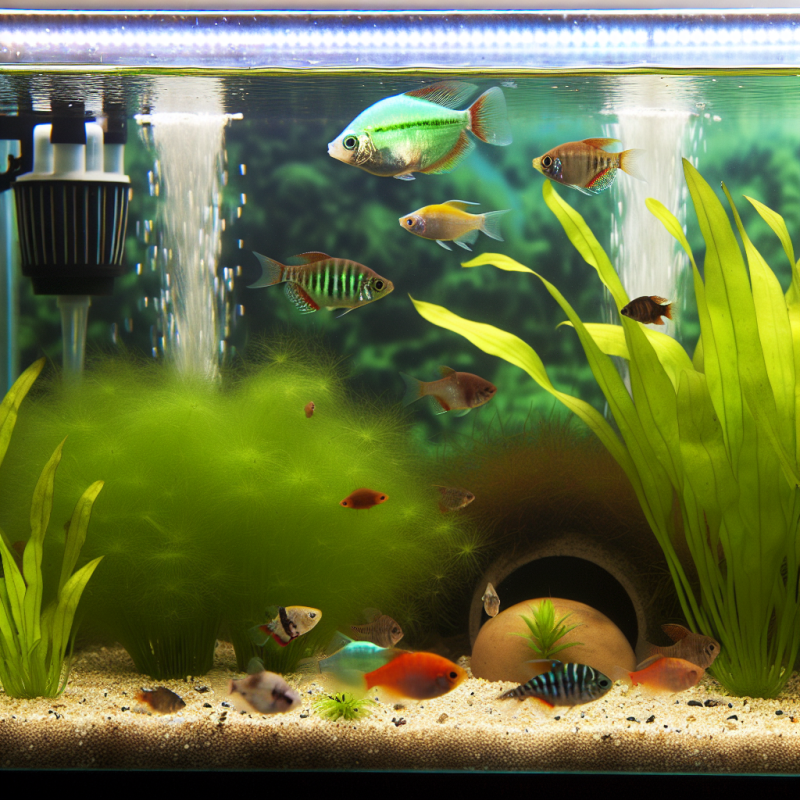Overview of Chemical Composition of Aquarium Water
Overview of Chemical Composition of Aquarium WaterThe chemical composition of aquarium water is an important component of maintaining a healthy environment for your fish. A balanced pH level is essential to their health. The different types of materials and substances in water can provide various benefits to aquatic life, such as minerals, oxygen, and carbon dioxide.
Aquarium water should be tested regularly with a pH test strip or test kit in order to ensure a balanced chemical makeup. The pH of water should stay within an acceptable range of 6.5-8.5. Too high of a pH level can cause serious health problems for fish, while too low of a pH level can harm plants and other organisms.
Aquarium water should also be tested for ammonia, nitrates, nitrites, and phosphate. Too much ammonia can cause severe stress to fish, so it is important to maintain a low ammonia level. Nitrates and nitrites are essential for breaking down organic waste, but can cause problems if the levels are too high. Phosphates are important for plants and serve as a food source for some aquatic life, but if levels get too high, they have the potential to cause algae to overpopulate an aquarium.
Overall, it is essential that aquarium water maintain a balanced chemical make-up in order to sustain the life of your fish. Testing the pH level and levels of ammonia, nitrates, nitrites, and phosphate should be a regular part of your tank maintenance.
Factors that Affect Water Quality in an Aquarium
Having a healthy aquarium requires good water quality. Different factors affect the quality of your aquarium water, and understanding what they are is the key to maintaining a successful tank. The following are important factors that affect water quality in an aquarium:
- Lighting - Lighting can impact the photosynthesis rate in the aquarium, which can have an effect on oxygen levels, pH and other chemical levels.
- Water temperature - The temperature of the aquarium affects microbial activity, oxygen levels and the activity level of fish and other living organisms.
- Filtration - Aquarium filtration is essential for maintaining a healthy aquarium. It helps remove chemicals, toxins and decaying organics from the water.
- Water circulation - Poor water circulation in an aquarium can lead to poor oxygen distribution and can lead to the accumulation of toxins and other pollutants.
- Chemical balance - Monitoring and maintaining the right chemical balance in an aquarium is essential for keeping the water safe and healthy. This includes pH levels, nitrates, nitrites and other chemical concentrations.
- Organic material & waste - Decay of organic material, such as uneaten food, decaying plants and waste products, can cause pollutants in the water. Regular aquarium maintenance and water changes will help keep this in check.
By understanding these factors and staying on top of aquarium maintenance, you can ensure good water quality in your aquarium, which is essential to the health of your fish, invertebrates and plants.
How to Monitor Aquarium Water Quality
Monitoring your aquarium water quality is an important aspect of aquarium care. The water quality of your aquarium affects the health of the plants and fish living inside. By keeping the water quality within acceptable levels, you can help to ensure that your aquarium is a healthy and safe habitat to your inhabitants.
Check Water Temperature
It is important to make sure that the water temperature of your aquarium remains within acceptable levels. Most tropical fish do best in water temperature between 75-85 degrees Fahrenheit. A thermometer will be needed to monitor water temperature. Make sure to place the thermometer away from any light sources as this can affect the temperature reading.
Conduct a Water Test
Conducting a water test is also important to monitor your aquarium water quality. This can be done with a test kit or test strips, which are available at your local fish store. The test kit or test strips will tell you the pH, ammonia, nitrite, and nitrate levels of the water. Armed with this information, you can determine if any adjustments need to be made to the water to keep the levels within acceptable ranges.
Regular Water Changes
Performing regular water changes is a must for monitoring aquarium water quality. Water changes remove impurities from the water and also help to maintain stable pH levels. A general rule of thumb is to change out 10% of the water weekly, but this can vary depending on the size and number of fish in the tank. Make sure to use water that is the same temperature as the aquarium water for the water change.
Monitoring the water quality of your aquarium is paramount to the health of your fish, plants, and other inhabitants. By regularly checking the water temperature, conducting water tests, and doing regular water changes, you can easily maintain good water quality in your aquarium and create a healthy habitat for your fish.
Benefits of Good Water Quality
Maintaining good water quality in your aquarium is essential for healthy fish and other aquatic life. Quality aquarium water encourages healthy growth and reproductive success, and helps keep aquarium inhabitants free from disease. High-quality water enables fish and other organisms to thrive.
The benefits of good water quality include:
- Healthy water helps a fish’s immune system, making them better able to fight off illnesses and infections.
- Controlling water chemistry and quality helps reduce the spread of diseases.
- Aquatic life reproduce more readily in a clean environment.
- Clean, clear, and balanced water helps keep fish active and alert.
- Good water quality encourages healthy plant growth, benefitting other life in the aquarium.
It is important to make sure your aquarium is set up properly, with proper filtration and water cycling, in order to maintain the highest quality water. Regular water testing is also essential to make sure parameters such as pH, gh, kh, and nitrate are within recommended levels. Testing your tank regularly helps you spot problems before they become serious and cause your fish to become sick.
Signs of Poor Water Quality
The signs of poor water quality can vary depending on the type of aquarium, but there are a few common signs that can alert you to potential problems. These include:
- Cloudy or discolored water.
- Excessive algae growth.
- Chemical imbalances, such as pH or ammonia.
- Persistent odors.
- Stunted or slow-growing fish.
- Fish displaying unusual behaviors such as listlessness, darting, or gasping for breath at the surface.
If you notice any of these signs, it is a good indication that something is wrong with the water quality. It is important to take action to correct the problem before it leads to the death of your fish or other aquatic life.
Strategies for Improving or Maintaining Water Quality
It is important to keep your aquarium water of high quality for the health of the fish. A few strategies will help you improve and maintain fish tank water quality.
Test the Water Quality
Testing the water quality is the best way to determine the health of the fish. Testing your tank water on a regular basis will help you recognize when there is a problem with the tank. You can buy a test kit from a pet store to regularly monitor the ammonia, nitrate, nitrite, and pH levels of your tank.
Regularly Change Out the Water
It is important to regularly change out some of the aquarium water as it builds up dirt particles, fish waste and other materials. You should use a siphon hose or container to change out at least 25% of the water every two weeks. When changing the water, make sure to use the same parameters as the tank water to keep the pH balanced.
Keep the Water Temperature Stable
The water temperature should remain stable and within the range appropriate to your fish. Extremely high or low temperatures can cause health problems. Consider keeping a surface heater or fan to adjust the temperature quickly when needed.
Keep the Tank Clean
Regularly clean your tank to keep the environment healthy for your fish. Clean any plants, decorations and filters with dechlorinated water. Scrape any algae from the walls of the tank with a sponge. Also, remember to use the same type of water when washing and rinsing aquarium supplies.
Add Beneficial Bacteria
Adding beneficial bacteria to the tank encourages the natural balance of bacteria in the aquarium water. Beneficial bacteria will help filter out ammonia, nitrate and nitrite from the water, resulting in healthier fish.
Conclusions and Recommendations
It is clear that the quality of water in your aquarium has a significant impact on the overall health and well-being of your fish and other aquatic life forms. Maintaining your aquarium water quality should be a priority in order to ensure the health of your aquatic environment. The most successful aquarists understand the importance of regularly checking their water parameters, performing partial water changes, and utilizing filtration and water chemistry management products to maintain proper aquarium water quality.
In conclusion, it is essential to understand that water quality is a key factor to keep your aquarium thriving. To ensure success, regularly monitor your aquarium water, perform partial water changes as needed, and properly use filter media, water treatments, and other aquarium maintenance products as recommended.



